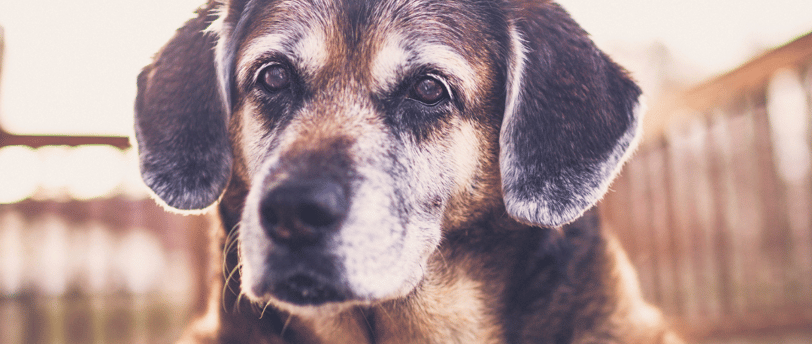How to Care for a Dog with Mobility Issues: Practical Day-to-Day Tips
Learn how to care for a dog with mobility issues, including arthritis, ACL injuries, or general leg problems. This guide provides practical tips on creating a comfortable environment, managing weight, gentle exercises, using mobility aids like dog knee braces, and pain management. Make your dog's life easier and happier with small but impactful changes to your daily routine.
11/29/20243 min read


Caring for a dog with mobility issues requires patience, dedication, and the right set of tools to ensure your furry friend remains comfortable and happy. Whether your dog is dealing with arthritis, leg injuries like an ACL tear, or general mobility problems, there are practical steps you can take to improve their quality of life. In this article, we provide a guide to help you manage daily challenges and provide the best care for your pet.
1. Understanding Mobility Issues in Dogs
Mobility issues in dogs can arise due to a variety of reasons, including arthritis, hip dysplasia, ACL injuries, or simply aging. Identifying the underlying cause of the problem is the first step to developing an effective care routine. Consult with your veterinarian to properly diagnose the issue and discuss appropriate treatment options like medications or physical therapy.
2. Creating a Comfortable Environment
One of the most crucial aspects of caring for a dog with mobility issues is ensuring their environment is accessible and safe.
- Non-Slip Flooring: Dogs with mobility challenges may struggle on slippery surfaces. Placing rugs or non-slip mats throughout the house can help provide the traction they need to move around more confidently.
- Orthopedic Beds: Invest in a high-quality orthopedic bed that provides proper support for your dog's joints. This helps reduce pain and makes resting more comfortable.
- Ramps and Steps: Use ramps or pet stairs to help your dog access furniture or get in and out of vehicles without putting strain on their joints.
3. Proper Nutrition and Weight Management
Maintaining a healthy weight is key to reducing stress on your dog’s joints. Overweight dogs are at a higher risk of developing or worsening mobility issues. Work with your veterinarian to create a balanced diet plan that supports joint health. Adding supplements such as glucosamine and omega-3 fatty acids can also be beneficial for maintaining joint function and reducing inflammation.
4. Gentle Exercise and Physical Therapy
Exercise is important, but it needs to be adapted to your dog’s limitations.
- Short, Frequent Walks: Instead of long, strenuous walks, opt for shorter and more frequent walks that allow your dog to move without overexerting themselves.
- Swimming: Swimming is a great low-impact exercise that strengthens muscles without putting undue stress on joints. Many rehabilitation centers offer hydrotherapy sessions that can be extremely beneficial for dogs with mobility issues.
- Stretching and Massage: Gentle stretching exercises and massages can help improve circulation, reduce stiffness, and promote flexibility. Ask your veterinarian or a certified pet therapist for specific stretches that would benefit your dog.
5. Using Mobility Aids
- Dog Knee Braces: Dog knee braces can provide additional support for dogs suffering from ACL injuries or other leg issues. These braces help stabilize the joint, reducing pain and allowing for better mobility. They can be a great aid in promoting healing and reducing discomfort during recovery.
There are a variety of mobility aids available to help your dog maintain independence.
- Harnesses: A support harness can help lift and support your dog as they navigate stairs or uneven terrain.
- Wheelchairs: For dogs with more severe mobility issues, wheelchairs can provide much-needed freedom. They allow your dog to enjoy outdoor activities and maintain a higher level of independence.
- Booties: Protective booties can provide better traction and protect sensitive paws from rough surfaces.
6. Pain Management
Managing your dog's pain is crucial to improving their quality of life. Talk to your veterinarian about medications that can help manage pain, such as anti-inflammatory drugs or other prescription medications. Alternative therapies like acupuncture or laser therapy may also offer relief from pain and discomfort.
7. Adapting Daily Routines
Make small changes in your daily routine to accommodate your dog’s needs.
- Feeding Station Adjustments: Elevate food and water bowls to reduce the strain on your dog’s neck and back.
- Regular Bathroom Breaks: Ensure your dog has regular opportunities to go outside, as mobility issues may make it harder for them to reach the door in time.
- Time and Patience: Always allow extra time for your dog to move at their own pace. Be patient and give them the space they need to feel comfortable.
8. Providing Mental Stimulation
Just because your dog has mobility issues doesn’t mean they can’t enjoy mental enrichment.
- Interactive Toys: Toys that require problem-solving, like treat-dispensing puzzles, can help keep your dog mentally active.
- Training Sessions: Continue to train and teach your dog new tricks or commands that do not require extensive physical movement. This helps keep their mind sharp and boosts their confidence.
Conclusion
Caring for a dog with mobility issues can be challenging, but with the right approach, you can help your furry friend live a comfortable, happy life. By creating a safe environment, providing gentle exercise, managing their pain, and ensuring they feel loved and supported, your dog can continue to enjoy their day-to-day activities. Remember, every small effort you make can significantly impact your dog’s quality of life and help them feel more secure and content.
